Genre: Action/RPG Developer: Sega Ent. Publisher: Sega Ent. Players: 1 Released: 1991
Back in 1986, Nintendo struck gold with The Legend of Zelda on NES, leading to years of my childhood spent exploring Hyrule, and also leading to a successful series that’s still thriving more than 30 years later. The series has inspired several imitators over the years, including a few Genesis titles that are commonly described as Zelda clones – Crusader of Centy most of all, but also Beyond Oasis and Landstalker. These titles seem based mainly on the third Zelda title, A Link to the Past, on SNES. However, Link to the Past is not my favorite Zelda game, because I still love 8-bit original Zelda NES the most. The Genesis’ Zelda clones never quite deliver what I want. All these years, I’ve wanted a game which continues the same experience of original Legend of Zelda… and I’ve finally found it: Golden Axe Warrior on Master System, which seems to be the most similar game in existence!
The name is misleading, actually, because there’s practically no connection to the Golden Axe series. This is a clone of The Legend of Zelda, pure and sweet. It just happens to steal some names from the Golden Axe series. For example, Gannon is replaced by Death Adder; and we meet Ax Battler at some point, as a minor non-playable character. We also talk to a dwarf named Gillian, who seems to be a misnamed version of Gilius Thunderhead. It works for me! But no one should be expecting any Golden Axe content, beyond names (and maybe those blue potion bottles, which fill up our magic, for our magic attacks). There is absolutely no brawler action, nor is there any resemblance of the main series, in any way. (It’s funny to consider that this game is really ripping-off two classic series, at the same time: Zelda, plus Golden Axe, as Sega cannibalized their own series for character names.) In relation to the Golden Axe series, this title can’t be considered anything more than a spin-off, or maybe an alternate-universe.
The story itself is overly-complicated, with descriptions of ancient wars fought by giants in the distant past and won by using the Golden Axe, only to be forgotten about for thousands of years. All of it amounts to little more than an abstract story behind the current situation, which is that Death Adder has returned to again attack our peaceful kingdom, called Firewood. His evil creatures have already invaded and spread throughout Firewood… exactly like Hyrule was attacked by Gannon and invaded with his creatures. The intro finishes by stating that a hero is needed to save the kingdom!
The graphics and art style are nicely consistent with original Legend of Zelda. Everything is plainly-drawn, with creatures who do not have a cute cartoon style (as they do in later Zelda games, starting with A Link to the Past, which came out the same year as Golden Axe Warrior). I find that the basic, plain art style demands a bit of imagination, so it’s more engaging and interesting than a cartoon style. The graphics are altogether slightly prettier, more detailed, and more colorful than The Legend of Zelda. Even so, this world seems familiar because it looks so much like Hyrule, including the grid rows of trees running across the landscape, the sandy shorelines alongside water, the mountain areas full of boulders, the bridges, and the stairways. Firewood even has an equivalent of Hyrule’s Lost Woods but with a new desert theme. So, we have a maze of repeating screens full of sand, cactus, and skeletons of cattle.
Our hero even looks like Link, just wearing a blue outfit instead of green. He’s just a solitary guy who rises up against Death Adder, and his only identity is the name that we give him (I like to name him LINK). He and Link are so similar that they both carry a shield with a Christian cross, although it’s never acknowledged as such. It invokes the imagery of the Crusades but without embracing that violent, bloody history. The holy cross did not survive in the Zelda series past the first two NES games; A Link to the Past introduces a new shield of nonreligious design that can’t offend anyone. Although Golden Axe Warrior came out the same year as Link to the Past, and while Sega did decide to keep Link’s holy cross, the publisher also seemed to realize that by 1991, it was no longer quite as acceptable to throw around religious symbols like that. Therefore, our blue hero’s shield has a stylized cross, which is asymmetrical, so it’s not technically the symbol of Christianity. Still, it’s an obvious cross, and it would fit on any bibles that are printed with stylized, decorative designs. In gameplay, the shield works just the same as in Zelda; providing protection from some projectiles on our hero’s left side.
The game’s enemies are also familiar from Hyrule, from the goblins who walk around the woods and shoot arrows (and also, throw hatchets) to the sea monsters who surface regularly to spit fireballs. The labyrinths include classic bats fluttering around and some cool-looking skeletons carrying big swords. While some enemies are almost the same as in Hyrule (like those bats), most enemies are more detailed and better-looking (like the skeletons). There’s also some nice creativity in some new enemies, like trees that come to life and start walking around as we explore the forest!
The gameplay is generally quite the same as The Legend of Zelda, with only vague directions or hints given by the townsfolk that we find occasionally. So, we’re again exploring a large 8-bit world without knowing quite what to do or where to go. In the actual Zelda series, only the first title is so completely open-ended, and I love it that here we have that same type of gameplay, which creates such a great sense of mystery and vagueness for the whole adventure. Both titles call for some kind of map, plus a guide or walkthrough because it could take ages to find everything… or we might just never find everything, and never be able to finish the game!
Our blue hero walks in four directions and our viewpoint moves screen-by-screen, just like The Legend of Zelda. Even these directly-copied controls are improved though, as we walk slightly faster than Link, and item collection has the nice touch of working by hitting them with our sword or axe. This upgrade might not sound like much, but it has a nice feel when collecting items. A lot of the game logic is the same. For example, killing all enemies will often cause a reward to appear, and destroying trees will often uncover stairways to secret places. Even those secret places are familiar, from the hiding places of merchants to wise men who give advice… and a couple of guys who are jerks; they take our money!
The abundance of secrets means that there might be something to discover in every single screen, though it’s probably about half of the screens that actually do contain a secret. So, it’s always worthwhile to explore every pixel. There are also secrets which appear for unexpected reasons. Sometimes, if we clear-cut every tree, a staircase might appear in some random spot that was never even covered by a tree. Another example is in the second labyrinth. It shows us that if a room presents no way to advance, we might just need to touch a certain spot on the wall to conjure up a bridge over troubled water! Overall, the game logic seems consistent with The Legend of Zelda but slightly more unpredictable.
Finding items grants us new abilities, of course, like the first magic scroll that gives us the ability to shoot fireballs. Each dungeon leads up to a boss fight, like a dragon, whose defeat gives us more heart containers for a bigger health meter. Clearing each dungeon also gives us a crystal ball. Nine must be collected in all – this game’s equivalent of Link collecting pieces of the Triforce. Golden Axe Warrior sticks close to the formula of Legend of Zelda, and it works because it’s such a great game from which to copy everything.
The music might not be better than that of Zelda, but it’s at least almost as good. The soundtrack grew on me the longer I heard it, and it started to seem possibly just as good as Zelda’s soundtrack after all. The outdoor songs convey a similar feeling of adventuring through the wilderness, while the labyrinth music carries a similar sense of danger and mystery.
The original Zelda doesn’t have towns or houses of any kind, and people are only found in caves. Golden Axe Warrior adds a few small houses for the non-playable characters. This addition might be the biggest difference between the two games, yet this is a small change which really affects nothing; it just gives us some new graphics and music for the houses. Inside, we can see families hanging out with humble furnishings of tables, rugs, beds, and flickering candles. The music sounds comforting and healing anytime we visit a house where we can buy items, rent a room (to refill our health), and save our game. We also get full-screen portraits of certain characters that we talk to, like the woman who saves our game for us. There are still no actual towns, and the houses just appear in the natural world, with the slightest bit of sidewalks, built in between the houses.
One difference which is small but lame, and which is seen constantly, is the currency used. We might expect to find and collect rupees, but instead that role is filled by… horns. You know, like rhino horns. This design choice might seem lame, but it’s realistic in a way because if we’re killing monsters, then we might as well hack off their horns after killing them! While I’d rather collect rupees, I can appreciate the concept. It makes more sense than the monsters carrying around money, after all.
Another poor design choice that’s also visible all the time is the health power-ups which might get dropped by slain enemies (when they’re not dropping their precious horns). The big power-ups are fine, actually, as a classic 8-bit image of roast beef (or whatever kind of meat), but the smaller health power-ups are stupid; they look like an off-white-colored shield or a big tooth. I honestly could not tell what these things are supposed to be, so I looked it up online and read that they’re loaves of bread. We’re thus collecting brown horns instead of rupees and light-brown loaves of bread instead of Zelda’s little hearts. Sega would have done better just directly copying those items, especially since Golden Axe Warrior does copy Zelda’s health meter. We have the same rows of heart containers, so obviously I’d rather fill those heart containers by collecting hearts, not loaves of bread! Thankfully, those two bland icons are outweighed by the entire world generally looking better than The Legend of Zelda because Firewood is generally more colorful and more detailed. For example, water animates nicely as it ripples through the rivers of the landscape, and some parts of the ground seem to be covered in pink flowers. On the other extreme, some very dark, morbid artwork includes destroyed houses full of skulls, and apparently, dead children laying on the floor!
So there we have it. A blatant, shameless Zelda knock-off that somehow manages to recreate its magic by copying it so closely. This game might as well be considered an unofficial sequel of The Legend of Zelda on NES, with graphics and gameplay that are more consistent and like it than Nintendo’s actual official sequels.
In The Legend of Zelda, I never played through Link’s second quest, because it doesn’t contain any new content and just rearranges all the same content of his main adventure. Golden Axe Warrior does essentially the same thing; it takes the main elements of The Legend of Zelda and rearranges everything. It does also improve the graphics and adds new ideas, so it’s more of a new experience. Meanwhile, it’s still so similar that it seems to belong on that same gold NES cart in place of Link’s second-quest… because this is basically a better second quest.
Despite being released in North America and Europe in 1991, Golden Axe Warrior has become rare and expensive. It’s possible that few copies were ever sold, but it’s also possible that many people do actually own it without ever selling it! Either way, the prices for a real copy are ridiculous, with a cart-only copy selling for around $150, as of writing this (we should keep an eye out at retro stores, in case they might sell a copy for less than that). Most folks will have thus to find a different option. Besides just downloading the ROM, for emulation/flash-carts, Golden Axe Warrior can be found in collections that were sold for the PlayStation 3 and the Xbox 360. I don’t own either of those consoles, however, and if I was going to spend money on some kind of physical copy of Golden Axe Warrior, I’d rather just buy a repro on a Master System cartridge because then it could play on my Genesis and Game Gear using each console’s adapter for Master System games.
For anyone like myself, who loves original Legend of Zelda so much that they’ve always wanted another game just like it, Golden Axe Warrior should hit the spot!
SCORE: 8 out of 10

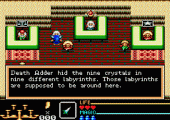
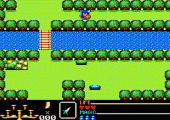
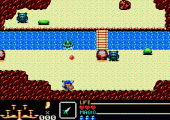
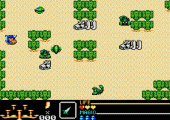
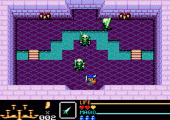
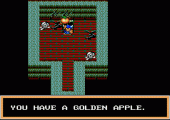
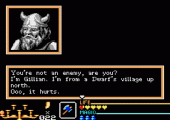
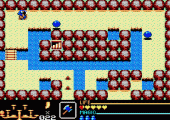
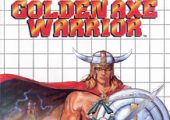
Recent Comments